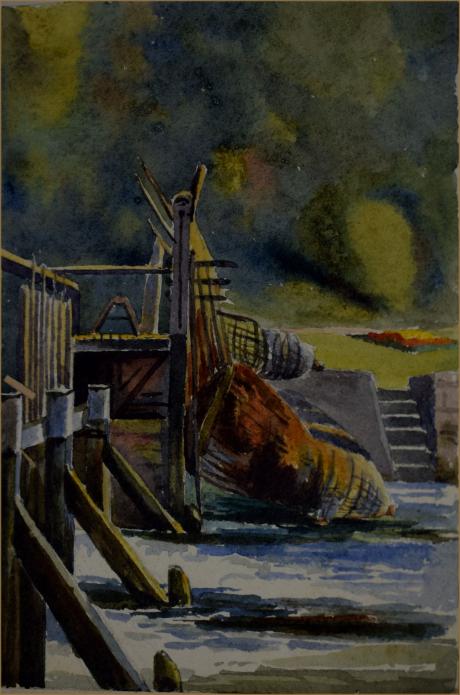inscribed and dated and igned by the house guests , " July 25th-29th , Mar Lowther, John H Ponsonby, Florence Ponsonby, Mabel C Lowther, Helen Farquar, Isabel Farquhar
An eel buck or eel basket is a type of fish trap that was prevalent in the River Thames in England up to the 20th century. It was used particularly to catch eels, which were a staple part of the London diet. Eel bucks were baskets made of willow wood, and were often strung together in a fishing weir. Construction of such weirs was outlawed under the terms of Magna Carta: All fish-weirs shall be removed from the Thames, the Medway, and throughout the whole of England, except on the sea coast. However the practice continued unabated, often with adverse effects on navigation. Several islands in the River Thames reflect the presence of bucks at those points; for example, Buck Ait and Handbuck Eyot.
A surviving eel buck may be seen on the River Test at 51°7'48?N 1°29'5?W
Hedsor Water is a stretch of the River Thames near Cookham, Berkshire which runs to the north of Sashes Island. Hedsor Water was once the main navigation of the Thames but was by-passed by the construction of Cookham Lock in 1830. Navigation is only possible for the first 100 metres from the downstream end, where a few temporary moorings are available, except for smaller boats.
Cookham lock opened in 1830, but no weir was built at this time. In 1832 Lord Boston of Hedsor House claimed compensation for loss of towpath rights along Hedsor Water which he was granted. In 1837 a weir was found necessary and built across Hedsor Water, leading to further litigation from Lord Boston for loss of trade to the wharf he owned there. Hedsor Wharf, on the upper reach of Hedsor Water had been an important trading post. The paper made at nearby Cookham Paper Mill was shipped from there and the stone used to build Shardeloes was brought from Oxford to Hedsor Wharf. This time the only compensation he received was the building of a flash lock in the weir. This was removed when the lock was rebuilt in 1869, as Lord Boston had built eel bucks in the stream in the meantime.
In 2003 Hedsor Water was the subject of a High Court judgement against Josie Rowland, the widow of Tiny Rowland and current owner of Hedsor Wharf Estate, who wanted to stop the Water being used as a public right of way.

